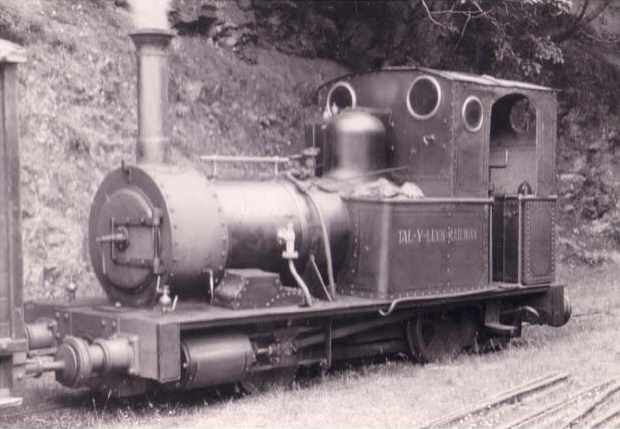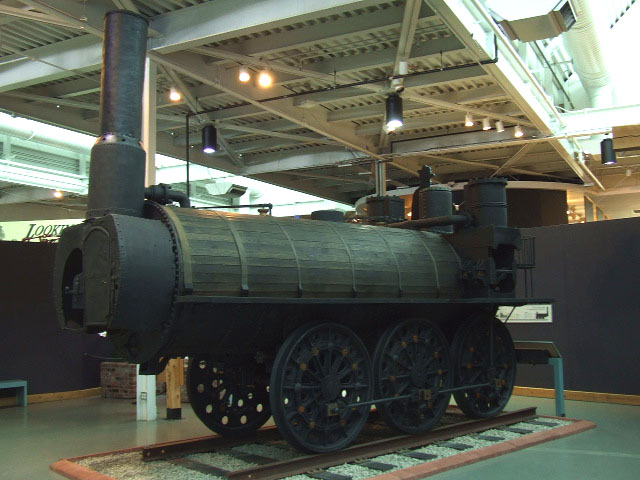|
Heritage Railway Association
Heritage Railway Association (HRA) is an umbrella organisation representing the majority of the heritage and tourist railways, railway museums, steam centres and railway preservation groups in the UK and Ireland. Groups and individuals involved with the preservation of stations and other railway buildings, and private individuals are also welcomed to join as Friends of the Association. The HRA organises several annual awards and competitions to further railway preservation in the UK, and also maintains various databases, such as that of preserved locomotives — currently numbering over 2500 items — and others holding the details of every known heritage carriage and wagon. The trophies awarded for three awards are lent to the HRA by the National Railway Museum (NRM), based at York. The trophy for the Annual Award is a coat of arms from the locomotive of a royal train on the London, Brighton & South Coast Railway. The Small Groups Award is a carved panel from a coach provided ... [...More Info...] [...Related Items...] OR: [Wikipedia] [Google] [Baidu] |
John Coiley
John Arthur Coiley (1932–1998) was an English museum curator, principally associated with the National Railway Museum in York from its formation in the 1973-5 period, through to his retirement as keeper of the museum in 1992. Biography Coiley was born in West Norwood, London, and educated at Beckenham and Penge County Grammar School and later at Selwyn College, Cambridge, graduating in 1954. He was awarded a PhD in 1959 in the field of electron microscopy. He married Patricia Anne Dixon in 1956, and the couple had a daughter and two sons. Coiley's early career was outside the museum sector, working first for the UK Atomic Energy Authority, and later for two private research institutions. He joined the Science Museum in 1973 and – probably in part as a result of a lifelong interest in railway history, which included photographic contributions to ''Images of Steam'', a 1968 publication – was appointed the first keeper of the National Railway Museum in 1974. The establishment ... [...More Info...] [...Related Items...] OR: [Wikipedia] [Google] [Baidu] |
Great Little Trains Of Wales
The Great Little Trains of Wales ( Welsh: ''Trenau Bach Arbennig Cymru'') is the name of a joint marketing scheme formed in 1970 to promote some of the narrow gauge railways of Wales and encourage visitors to Wales. As well as marketing the railways, the scheme allows visitors to purchase a discount card, allowing reduced rates on all the lines. As of 2021, there are twelve railways in the scheme. See also * Britain's Great Little Railways * Heritage Railway Association * British narrow gauge railways There were more than a thousand British narrow-gauge railways ranging from large, historically significant common carriers to small, short-lived industrial railways. Many notable events in British railway history happened on narrow-gauge railwa ... References External linksGreat Little Trains of Wales website {{Tourism in Wales Marketing boards Tourist attractions in Wales ... [...More Info...] [...Related Items...] OR: [Wikipedia] [Google] [Baidu] |
British Narrow Gauge Railways
There were more than a thousand British narrow-gauge railways ranging from large, historically significant common carriers to small, short-lived industrial railways. Many notable events in British railway history happened on narrow-gauge railways including the first use of steam locomotives, the first public railway and the first heritage railway, preserved railway. History Early railways: before 1865 The earliest narrow-gauge railways were crude wooden trackways used in coal mines to guide wooden Quarry tub, tubs. Because of the restricted loading gauge of the tunnels and the need for the tubs to be small enough to be pushed by one man, these railways were almost all narrow gauge. These underground lines often had short above-ground sections as well. After the start of the Industrial Revolution it became possible to create railways with iron tracks and wheels, which reduced the friction involved in moving wagons and made longer horse-hauled trains possible. These could mov ... [...More Info...] [...Related Items...] OR: [Wikipedia] [Google] [Baidu] |
List Of Closed Railway Stations In Britain
A ''list'' is any set of items in a row. List or lists may also refer to: People * List (surname) Organizations * List College, an undergraduate division of the Jewish Theological Seminary of America * SC Germania List, German rugby union club Other uses * Angle of list, the leaning to either port or starboard of a ship * List (information), an ordered collection of pieces of information ** List (abstract data type), a method to organize data in computer science * List on Sylt, previously called List, the northernmost village in Germany, on the island of Sylt * ''List'', an alternative term for ''roll'' in flight dynamics * To ''list'' a building, etc., in the UK it means to designate it a listed building that may not be altered without permission * Lists (jousting), the barriers used to designate the tournament area where medieval knights jousted * ''The Book of Lists'', an American series of books with unusual lists See also * The List (other) * Listing (di ... [...More Info...] [...Related Items...] OR: [Wikipedia] [Google] [Baidu] |
List Of British Heritage And Private Railways
This is a list of heritage, private and preserved railways throughout the United Kingdom, the Crown dependencies, and British Overseas Territories whether operational or closed, that are operated for charitable purposes or shareholder profit. Some also provide economic local transport. For rail museums, see ''List of British railway museums''. Many of the standard-gauge railways listed, including former branch lines and ex-mainline routes, were closed by British Railways under the Beeching Axe of the 1960s. Most have been restored and operate as heritage lines. A smaller number of lines were formerly industrial or colliery railways. Many of these preserved railways are mentioned in national and international tour guides, and visits may form part of a school curriculum or feature in other studies, including civil engineering, mechanics, social, economic and political history, visual arts and drama. This list also includes tramways. Nearly all tram services in Britain ended i ... [...More Info...] [...Related Items...] OR: [Wikipedia] [Google] [Baidu] |
Registered Charity
A charitable organization or charity is an organization whose primary objectives are philanthropy and social well-being (e.g. educational, religious or other activities serving the public interest or common good). The legal definition of a charitable organization (and of charity) varies between countries and in some instances regions of the country. The regulation, the tax treatment, and the way in which charity law affects charitable organizations also vary. Charitable organizations may not use any of their funds to profit individual persons or entities. (However, some charitable organizations have come under scrutiny for spending a disproportionate amount of their income to pay the salaries of their leadership). Financial figures (e.g. tax refund, revenue from fundraising, revenue from sale of goods and services or revenue from investment) are indicators to assess the financial sustainability of a charity, especially to charity evaluators. This information can impact a char ... [...More Info...] [...Related Items...] OR: [Wikipedia] [Google] [Baidu] |
Stockton And Darlington Railway
The Stockton and Darlington Railway (S&DR) was a railway company that operated in north-east England from 1825 to 1863. The world's first public railway to use steam locomotives, its first line connected collieries near Shildon with Darlington and Stockton-on-Tees in County Durham, and was officially opened on 27 September 1825. The movement of coal to ships rapidly became a lucrative business, and the line was soon extended to a new port at Middlesbrough. While coal waggons were hauled by steam locomotives from the start, passengers were carried in coaches drawn by horses until carriages hauled by steam locomotives were introduced in 1833. The S&DR was involved in the building of the East Coast Main Line between York and Darlington, but its main expansion was at Middlesbrough Docks and west into Weardale and east to Redcar. It suffered severe financial difficulties at the end of the 1840s and was nearly taken over by the York, Newcastle and Berwick Railway, before the ... [...More Info...] [...Related Items...] OR: [Wikipedia] [Google] [Baidu] |
Timothy Hackworth
Timothy Hackworth (22 December 1786 – 7 July 1850) was an English steam locomotive engineer who lived in Shildon, County Durham, England and was the first locomotive superintendent of the Stockton and Darlington Railway. Youth and early work Timothy Hackworth was born in Wylam in 1786, five years after his fellow railway pioneer George Stephenson had been born in the same village. Hackworth was the eldest son of John Hackworth who occupied the position of foreman blacksmith at Wylam Colliery until his death in 1804; the father had already acquired a considerable reputation as a mechanical worker and boiler maker. At the end of his apprenticeship in 1810 Timothy took over his father's position. Since 1804, the mine owner, Christopher Blackett had been investigating the possibilities of working the mine's short colliery tramroad by steam traction. Blackett set up a four-man working group including himself, William Hedley, the viewer; Timothy Hackworth, the new foreman smith an ... [...More Info...] [...Related Items...] OR: [Wikipedia] [Google] [Baidu] |
Great Western Railway
The Great Western Railway (GWR) was a British railway company that linked London with the southwest, west and West Midlands of England and most of Wales. It was founded in 1833, received its enabling Act of Parliament on 31 August 1835 and ran its first trains in 1838 with the initial route completed between London and Bristol in 1841. It was engineered by Isambard Kingdom Brunel, who chose a broad gauge of —later slightly widened to —but, from 1854, a series of amalgamations saw it also operate standard-gauge trains; the last broad-gauge services were operated in 1892. The GWR was the only company to keep its identity through the Railways Act 1921, which amalgamated it with the remaining independent railways within its territory, and it was finally merged at the end of 1947 when it was nationalised and became the Western Region of British Railways. The GWR was called by some "God's Wonderful Railway" and by others the "Great Way Round" but it was famed as the "Holiday ... [...More Info...] [...Related Items...] OR: [Wikipedia] [Google] [Baidu] |
Umbrella Organisation
An umbrella organization is an association of (often related, industry-specific) institutions who work together formally to coordinate activities and/or pool resources. In business, political, and other environments, it provides resources and often identities to the smaller organizations. In this kind of arrangement, it is sometimes responsible, to some degree, for the groups under its care. Examples * AFL–CIO and other national trade union centers * DD172 * Department of Public Safety * European Armenian Federation for Justice and Democracy * European Music Council * European Welding Federation, European Federation for Welding, Joining and Cutting (EWF) * Federation of Poles in Great Britain * Federation of Student Islamic Societies * Independent Sector * National Retail Federation * National Wrestling Alliance * Open Source Geospatial Foundation * Software in the Public Interest * UEFA * Ulster Defence Association *United Way * Yamaguchi-gumi * National Federation of Coffee ... [...More Info...] [...Related Items...] OR: [Wikipedia] [Google] [Baidu] |



.jpg)

